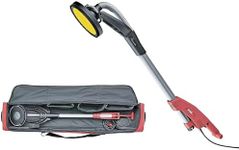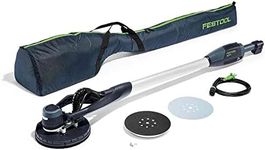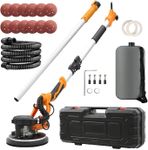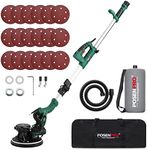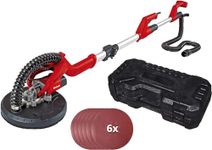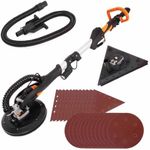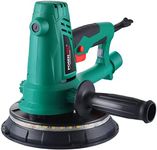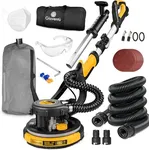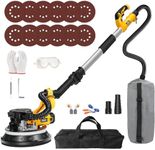Buying Guide for the Best Drywall Sanders
Choosing the right drywall sander can make a significant difference in the quality and efficiency of your drywall finishing projects. The right tool will help you achieve a smooth, even surface with minimal effort. When selecting a drywall sander, consider the type of projects you typically undertake, the size of the areas you work on, and your comfort level with different types of tools. Understanding the key specifications will help you make an informed decision that aligns with your needs and preferences.Type of SanderDrywall sanders come in different types, including manual hand sanders, pole sanders, and electric sanders. Manual hand sanders are lightweight and ideal for small projects or touch-ups. Pole sanders extend your reach, making them suitable for ceilings and high walls. Electric sanders, including orbital and belt sanders, are powerful and efficient for large areas. Choose based on the scale of your projects and your physical comfort with handling the tool.
Power SourceElectric drywall sanders can be corded or cordless. Corded sanders offer continuous power and are suitable for extended use, but they require access to an electrical outlet. Cordless sanders provide more mobility and are convenient for areas without easy access to power, but they may have limited battery life. Consider where you will be working and whether mobility or continuous power is more important for your projects.
Motor PowerMotor power, measured in watts or amps, determines the sander's ability to handle tough sanding jobs. Higher power means more efficient sanding, especially on large surfaces or tough materials. For small, occasional projects, a lower power sander may suffice. For frequent, large-scale projects, opt for a higher power model to ensure efficiency and effectiveness.
Dust CollectionDust collection systems are crucial for maintaining a clean work environment and minimizing health risks. Some sanders come with built-in dust collection bags or can be connected to a vacuum. Effective dust collection is important for indoor projects or when working in occupied spaces. If dust control is a priority, look for models with efficient dust collection features.
Weight and ErgonomicsThe weight and ergonomic design of a drywall sander affect user comfort and ease of use. Lighter sanders are easier to handle, especially for extended periods or overhead work. Ergonomic handles and adjustable features can reduce fatigue and improve control. Consider your physical strength and the duration of your projects when evaluating these aspects.
Sanding Pad SizeThe size of the sanding pad affects the coverage area and precision. Larger pads cover more area quickly, making them suitable for large, flat surfaces. Smaller pads offer more control and precision, ideal for detailed work or tight spaces. Choose a pad size that matches the nature of your projects and the level of detail required.


